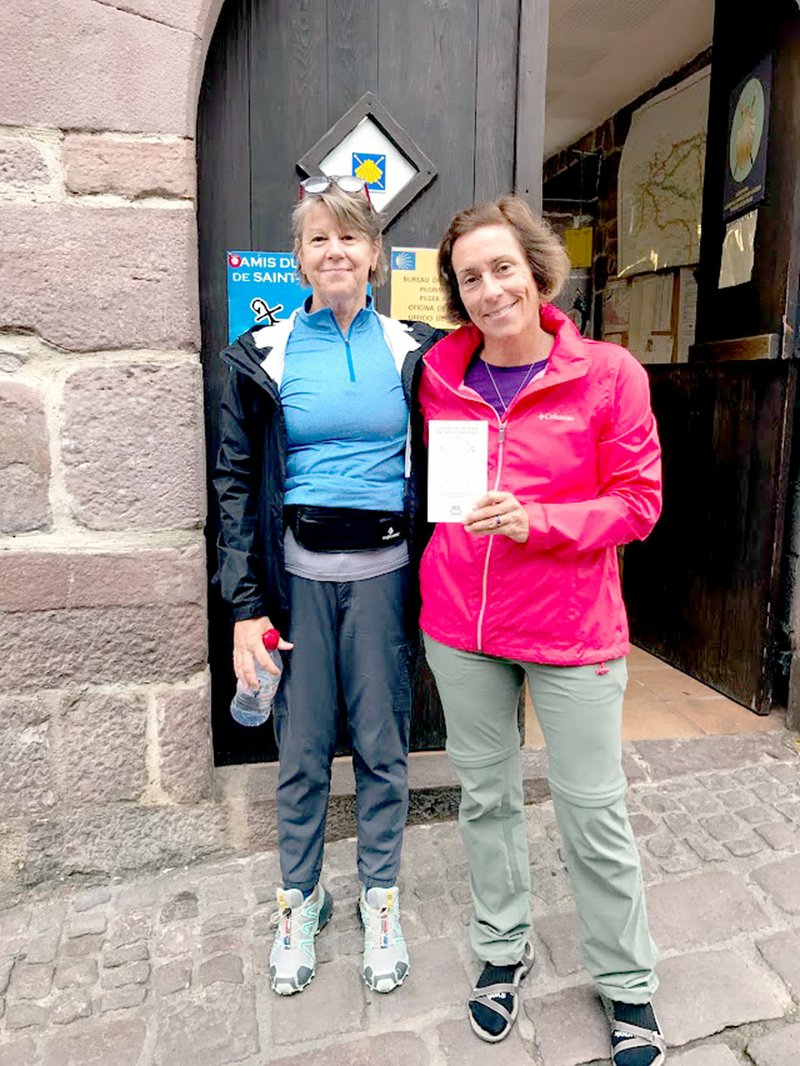For hundreds of years, pilgrims have traveled to the place where one of the 12 apostles, Saint James, was buried. Recently, two local women traveled to Spain to follow in the footsteps of thousands of Christians, to the Camino de Santiago.
Carie O'Banion, a retired teacher, heard about the route when she was following a friend's blog. The Camino de Santiago is actually a series of routes that lead to the site where St. James was buried. O'Banion and her friend, Beth Haller, chose a route that began in France, and they walked more than 400 miles in about five weeks.
Carie O’Banion will talk about her 400 mile adventure in France and Spain at the Bella Vista Community Church on Saturday, Jan. 9, at 9 a.m.
Since it's a route that has been in continuous use for over 12 centuries, it doesn't really resemble a North American hiking trail, O'Banion explained. She has no interest in walking the Appalachian or Pacific Crest Trails, she said. For one thing, she doesn't want to carry camping gear. Along the Camino, at regular intervals are alberques -- or hostels. Although they splurged on a nice hotel a couple of nights, during most of their trip they stayed in alberques.
Some of the alberques were nice, but some were not quite as nice. Often there was a room filled with bunk beds where pilgrims of either sex could spend the night. They realized, they liked the accommodations better if the men and women were separated because the women don't snore as much.
Near each alberque was a place to get a "pilgrim's meal." The meals were simple but filling and reasonably priced. Haller said she especially liked the salads which were always fresh and always delicious.
Often the meal was served with wine, but the hosts couldn't understand why anyone would want both water and wine. If water was ordered, it came instead of wine but at the same price. O'Banion quickly learned to fill her plastic water bottle before she sat down so she could order wine.
Water was never a problem, she said. There were fountains in all the small towns that could be used to fill the plastic bladders they carried in their backpacks, as well as plastic water bottles. Sometimes they stopped in a local grocery store for cookies to eat along the way. Occasionally, they came across vending machines filled with first-aid items for feet. Some doctors would treat a pilgrim with foot problems for free, O'Banion said.
They each carried a pack every day with water and a few pieces of extra clothing. Every night, they rinsed out what they were wearing and let it air dry. They also carried hiking sticks, which helped.
Meeting people from all over the world was the best thing about the trip for Haller. She's only sorry she didn't take a photo of each one of them. Sometimes the two friends didn't walk together, but they always met for meals.
"I never felt like I wasn't safe," O'Banion said.
Some sections of trail were crowded but other places were not. Sometimes they passed farmers plowing fields with oxen and antique tools. But they also passed a few abandoned villages where the natives had gone looking for opportunity.
Early on they crossed the Pyrenees and, while it was a difficult climb, it was worth it to see the views.
"You felt like you were in the Sound of Music," Haller said.
In the mountains, animals including sheep and horses roamed freely, but each wore a bell.
The trails were marked with concrete markers which were decorated with a scallop shell and a yellow arrow. In the country, the markers were easy to spot, but in the cities, they might be embedded in the pavement or high up on a building.
During the middle ages, people took pilgrimages as penance. Today, many pilgrims are looking for a spiritual experience.
For Haller and O'Banion, the trip was an adventure. It was also surprisingly affordable. When you have to carry anything you buy, you're not likely to stop for souvenirs, O'Banion explained.
Just knowing you can do a trip like that is empowering, Haller said.
They are not planning another five-week walk, O'Banion said. She is planning to walk in and out of the Grand Canyon later this year, but that's only a couple of days. Haller is planning a long bike ride with a group of friends this summer.
The Camino de Santiago was a once in a lifetime adventure for the two friends.
General News on 01/09/2019

